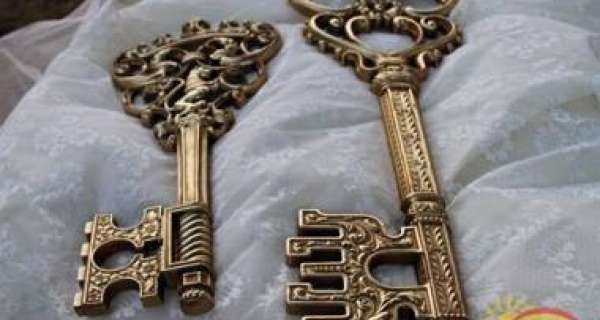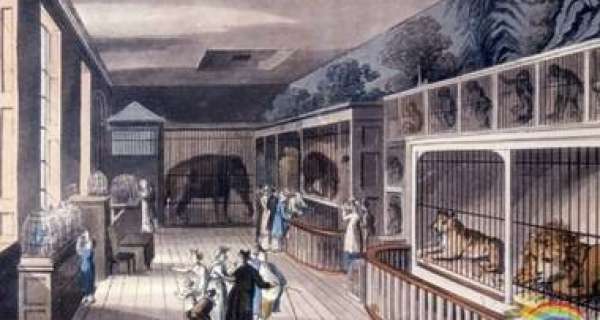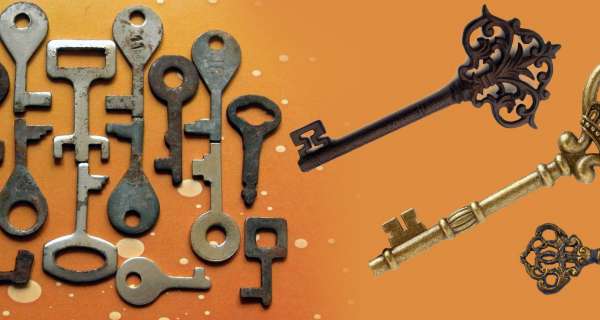Movable wooden pins known as tumblers were fastened in the top of the slot. When the bolt slid into place, the wooden tumblers dropped into holes cut in the bolt. The bolt was held fast until the tumblers were lifted up with a key.
This first key did not look at all like a key as we know it today. It looked more like a giant-sized toothbrush with pegs instead of bristles on one end. When the key was put in the slot, the pegs went under the tumblers. By raising the key, the tumblers were forced out of the bolt, which was then easily drawn back.
The Egyptian key could only be used on that side of the door where the bolt was placed. The Greeks discovered a way to slide back the bolt from the other side of the door. They slid their key through a hole in the door above the bolt until its tip touched a notch in the bolt on the inside. The Greek key was a curved bar, in shape and size much like a farmer's sickle. Some of these keys were over three feet long and were carried over the shoulder.
The Romans later became the most skillful lock makers of the ancient world. They made a great improvement in the key. The pegs on the end of the Roman keys were cut in many different shapes. Now a thief had to make a key with pins not only in the right position and of the right length but also of the right shape.
The Romans worked out a small lock that could be carried from place to place. We call such locks padlocks. The small padlock keys were often made in the shape of rings, so they could be worn on a finger.














